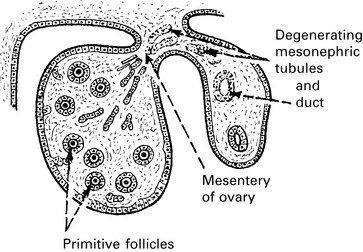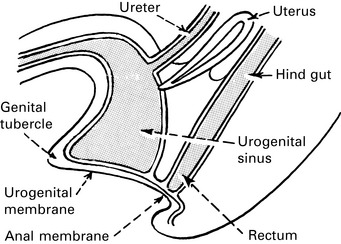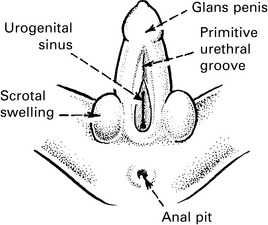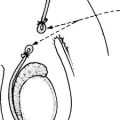Chapter 1 Embryology of the Reproductive Tract
Development of external genitalia
At an early stage, the hind gut and the various urogenital ducts open into a common cloaca.
A septum (urorectal) grows down between the allantois and the hind gut during the 5th week.
Certain small, but clinically important, glands are formed in and around the urogenital sinus.




























